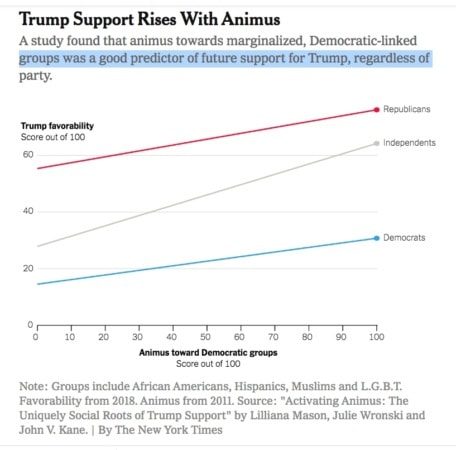
In 2016, Donald Trump recruited voters with the highest levels of animosity toward African Americans, assembling a “schadenfreude” electorate — voters who take pleasure in making the opposition suffer — that continues to dominate the Republican Party, even in the aftermath of the Trump presidency.
With all his histrionics and theatrics, Trump brought the dark side of American politics to the fore: the alienated, the distrustful, voters willing to sacrifice democracy for a return to white hegemony. The segregationist segment of the electorate has been a permanent fixture of American politics, shifting between the two major parties.
For more than two decades, scholars and analysts have written about the growing partisan antipathy and polarization that have turned America into two warring camps, politically speaking.
Lilliana Mason, a political scientist at Johns Hopkins, makes the case via Twitter that Trump has “served as a lightning rod for lots of regular people who hold white Christian supremacist beliefs.” The solidification of their control over the […]











These Trump supporters are set upon destroying the U.S.A., yet they do not even know that is the ultimate outcome of their decision.